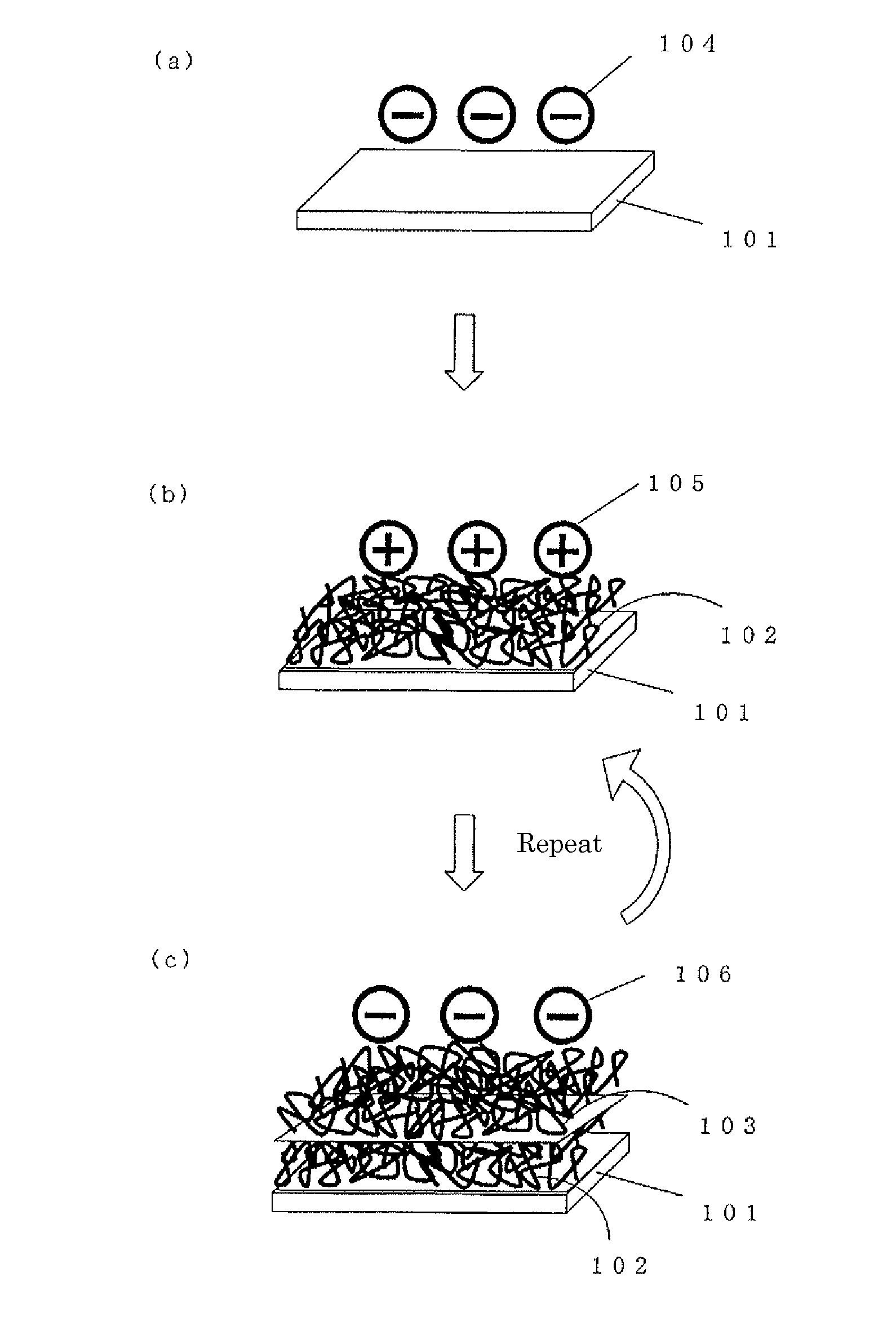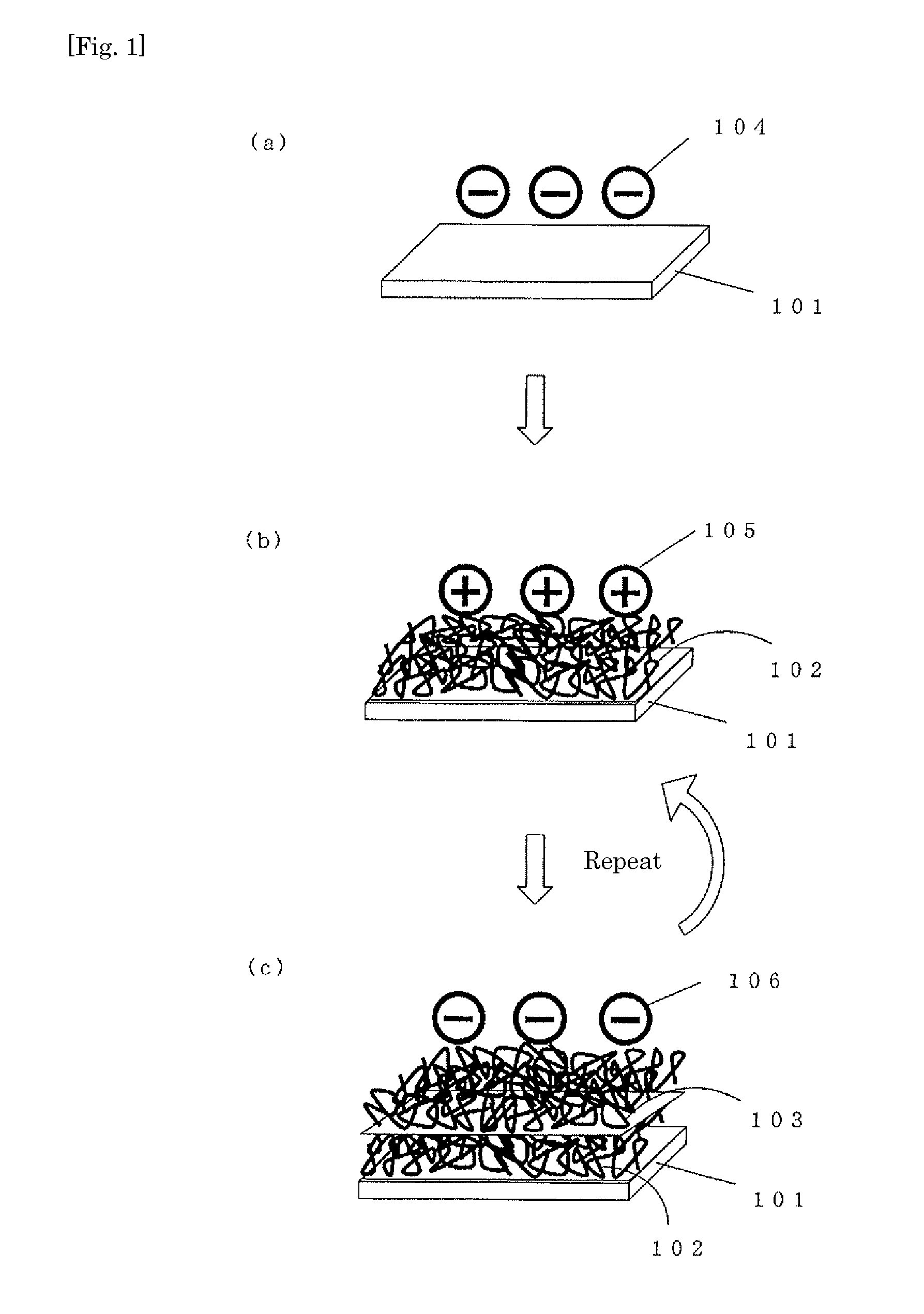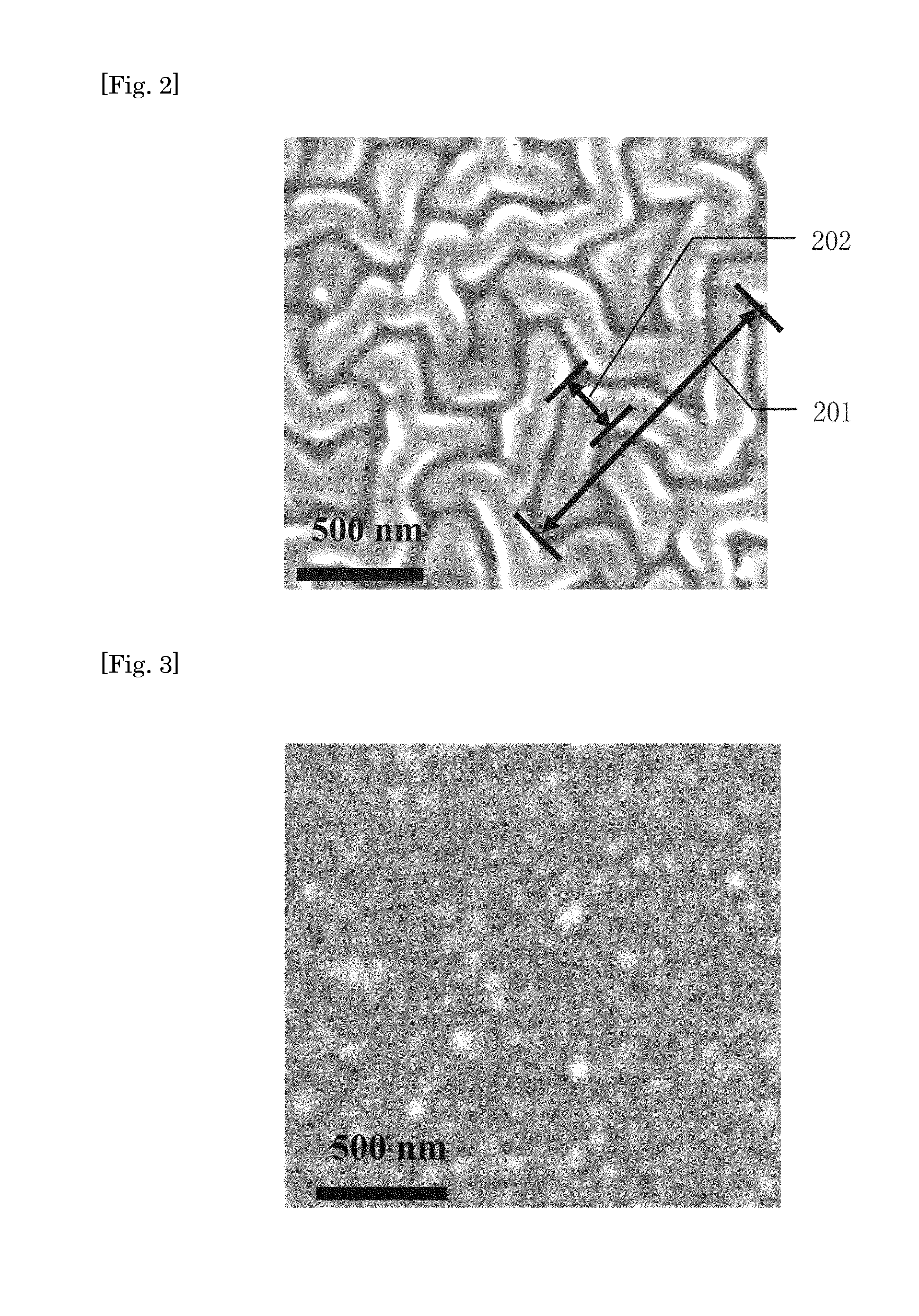Antithrombogenic surface
a technology of antithrombosis and surface, applied in the field of laminated films, can solve the problems of deterioration of performance during use of medical devices, clinical problems, complicated control of production and operation, etc., and achieve the effects of low thickness, favorable coating, and high antithrombosis
- Summary
- Abstract
- Description
- Claims
- Application Information
AI Technical Summary
Benefits of technology
Problems solved by technology
Method used
Image
Examples
example 1
[0050]A glass plate previously charged negatively was immersed in 100 mM polydiallyldimethylammonium chloride (PDDA) solution for 15 minutes, forming a polycation layer; it was then immersed in purified water for cleaning thrice for 2 minutes, 1 minute and 1 minute; it was then immersed in 1;1 mixture solution of polyvinylalcohol (PVA: molecular weight; 1500, 1 wt %) and polyacrylic acid (PAA molecular weight; 90000, 20 mM), forming a polyanion layer; and it was then immersed in purified water for cleaning thrice for 2 minutes, 1 minute and 1 minute. The operation above was repeated 20 times (lamination number: 20), forming a PVA / PAA surface having a negatively charged outermost layer on the glass plate. The SEM image of the surface is shown in FIG. 2. As shown in FIG. 2, the surface had a three-dimensional texture structure having surface irregularity. Subsequently, the length 201 of the constituent elements in the three-dimensional texture structure, as determined under SEM, was a...
example 2
[0055]A PVA / PAA surface having a three-dimensional texture structure having a negatively charged outermost layer and an irregular surface similar to that in Example 1 was formed on the filter region of a catheter-shaped medical device previously negatively charged that is to be installed in blood vessel for capturing embolus-causing substances (304 stainless steel, diameter 20 μm, opening: 100 μm) at a lamination number of 20, by an operation similar to that in Example 1. The length of the constituent elements in the three-dimensional texture structure, as determined then under SEM, was averagely 3 μm or less; the width was averagely 500 nm or less; the surface irregularity in the depth direction was 70 nm; and the thickness of the alternately laminated polymer layer was 1000 nm.
example 3
[0056]A PVA / PAA surface having a three-dimensional texture structure having a negatively charged outermost layer and an irregular surface, similar to that in Example 1 was formed on the filter region of a catheter-shaped medical device previously negatively charged that is to be installed in blood vessel for capturing embolus-causing substances (304 stainless steel, diameter 20 μm, opening: 100 μm) at a lamination number of 5 by an operation similar to that in Example 1. The length of the constituent elements in the three-dimensional texture structure, as determined then under SEM, was averagely 3 μm or less; the width was averagely 500 nm or less; the surface irregularity in the depth direction was 15 nm; and the thickness of the alternately laminated polymer layer was 200 nm.
PUM
| Property | Measurement | Unit |
|---|---|---|
| Thickness | aaaaa | aaaaa |
| Thickness | aaaaa | aaaaa |
| Depth | aaaaa | aaaaa |
Abstract
Description
Claims
Application Information
 Login to View More
Login to View More - R&D
- Intellectual Property
- Life Sciences
- Materials
- Tech Scout
- Unparalleled Data Quality
- Higher Quality Content
- 60% Fewer Hallucinations
Browse by: Latest US Patents, China's latest patents, Technical Efficacy Thesaurus, Application Domain, Technology Topic, Popular Technical Reports.
© 2025 PatSnap. All rights reserved.Legal|Privacy policy|Modern Slavery Act Transparency Statement|Sitemap|About US| Contact US: help@patsnap.com



